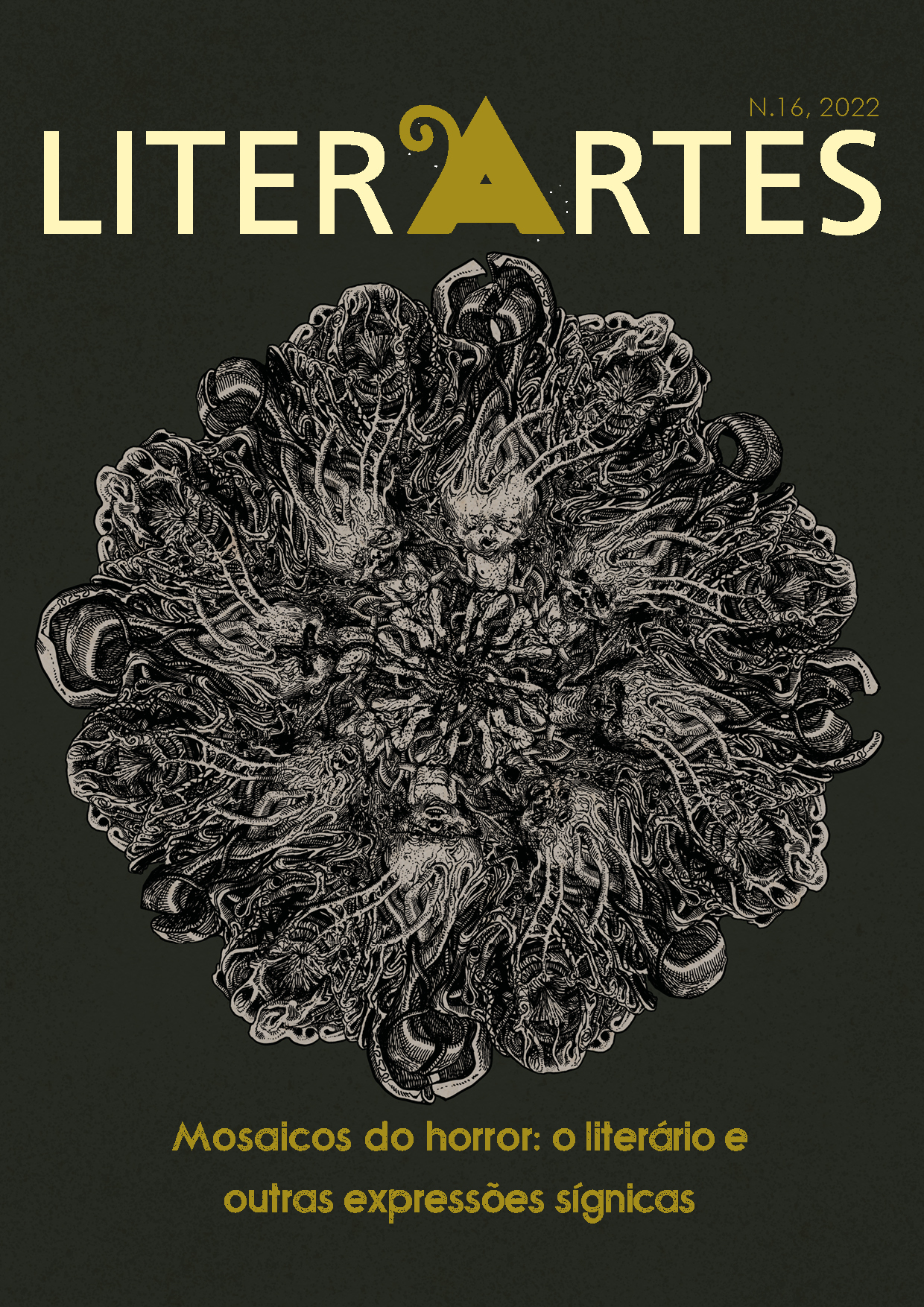Gothic tradition in Until Dawn
DOI:
https://doi.org/10.11606/issn.2316-9826.literartes.2022.185153Keywords:
gothic, narrative, videogame, Until DawnAbstract
This article aims at presenting an analysis of the plot of the electronic game Until Dawn (2015) from the point of view of the Gothic tradition. Considering the observations by Rossi (2008), the study highlights the basic elements that establish a link with the Gothic. The investigation is based upon three fundamental principles addressed by França (2016): locus horribilis, the monstruous character and the ghost from the past. Furthermore, considering the studies of Murray (2003), Wolf (2001), Perron (2004) and Aarseth (2004) regarding to games and narrative, the study attempts to demonstrates how the choices made by the player are explored to enhance his/her narrative experience, exploit the Gothic elements from the plot.
References
AARSETH, Espen. Quest games as Post-Narrative Discourse. In: RYAN, M.-L. (ed). Narrative across media. Lincoln: University of Nebraska Press, p. 361-376, 2004.
BLOODBORNE. Sony: FromSoftware Inc, 2015.
CALL of Cthulhu. Focus Entertainment: Cyanide, 2018.
DARKEST Dungeon. Red Hook Studios: Red Hook Studios, 2015.
EU SEI o que vocês fizeram no verão passado. United States: Columbia Pictures:1997.
FRANÇA, Júlio. O gótico e a presença fantasmagórica do Passado. In: Congresso Internacional da ABRALIC, XV, 2016, Rio de Janeiro. Anais. Rio de Janeiro: Dialogarts, 2016. p. 2492 – 2502.
GOD OF WAR. Sony: Santa Monica Studio & Jetpack Interactive, 2018.
GONE Home. The Fullbright Company: The Fullbright Company, 2018.
HAWTHORNE, Nathaniel. The Scarlet Letter. São Paulo: Penguin Classics Companhia das Letras, 2019.
HEAVY RAIN. Quantic dream, 2010.
MURRAY, Janet H. Hamlet no Holodeck: o futuro da narrativa no ciberespaço. Trad. Elissa Khoury, Marcelo Fernandez Cuzziol. São Paulo: Itaú Cultural/Editora Unesp, 2003.
OJIBWA. Disponível em: https://www.thecanadianencyclopedia.ca/en/article/ojibwa. Acesso em 06/02/2022.
PERRON, Bernard. Sign of a Threat: The Effects of Warning Systems in Survival Horror Games. In: WOLF, M J. P. (dir.), Video Games and Gaming Culture, vol. 3, p. 435-454. New York: Routledge (2004).
PSICOSE. Alfred Hitchcock. United Sates: Paramount Pictures,1960.
PUNTER, David; BYRON, Glennis. The Gothic. Malden, MA: Blackwell Publishing, 2004.
ROSSI, Aparecido D. Manifestações e configurações do Gótico nas Literaturas Inglesa e Norte-Americana: um panorama. ÍCONE - Revista de Letras, São Luís de Montes Belos, v.2, p. 55-76, jul.2008.
SHELLEY, Mary. Frankenstein. São Paulo: Penguin Classics Companhia das Letras, 2015.
SILENT Hill. Konami: Konami, 1999.
STOKER, Bram. Dracula. São Paulo: Penguin Classics Companhia das Letras, 2014.
TODOROV, Tzvetan. Introdução à literatura fantástica. São Paulo: Perspectiva, 1980.
UNTIL Dawn. Sony: Supermassive Games, 2015.
WALPOLE, Horace. O castelo de Otranto. São Paulo: Nova Alexandria, 1996.
WENDIGO. Disponível em: https://www.legendsofamerica.com/mn-wendigo/. Acesso em 09/12/2020)
WOLF, Mark J. P. The medium of the video game. Austin: University of Texas Press, 2001.
Downloads
Published
Issue
Section
License
Copyright (c) 2022 Iris Maitê Fullas Aguiar

This work is licensed under a Creative Commons Attribution-NonCommercial 4.0 International License.
Autores que publicam nesta revista concordam com os seguintes termos:
- Autores mantém os direitos autorais e concedem à revista o direito de primeira publicação, com o trabalho simultaneamente licenciado sob a Licença Creative Commons Attribution que permite o compartilhamento do trabalho com reconhecimento da autoria e publicação inicial nesta revista.
- Autores têm autorização para assumir contratos adicionais separadamente, para distribuição não-exclusiva da versão do trabalho publicada nesta revista (ex.: publicar em repositório institucional ou como capítulo de livro), com reconhecimento de autoria e publicação inicial nesta revista.
- Autores têm permissão e são estimulados a publicar e distribuir seu trabalho online (ex.: em repositórios institucionais ou na sua página pessoal) a qualquer ponto antes ou durante o processo editorial, já que isso pode gerar alterações produtivas, bem como aumentar o impacto e a citação do trabalho publicado (Veja O Efeito do Acesso Livre).



